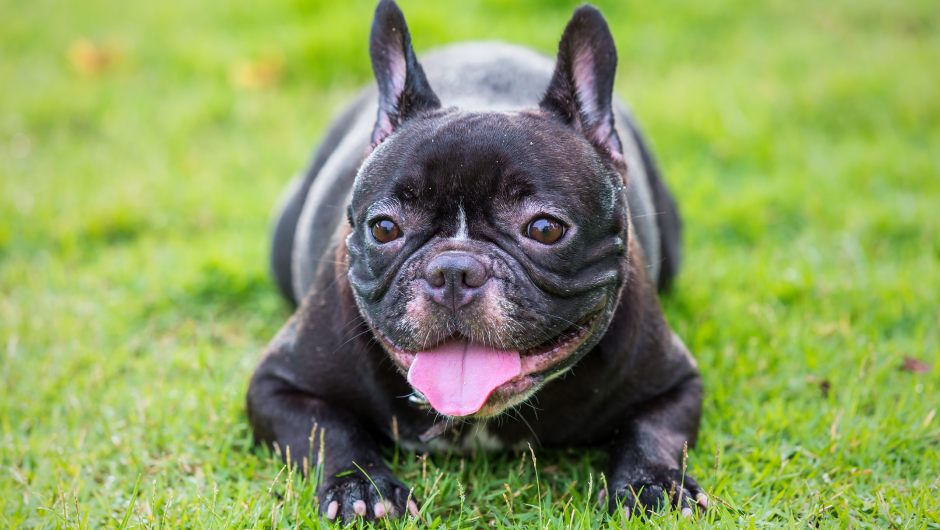Late Summer Dangers for Heat Stroke in Dogs
Dogs do not handle heat the same way that people do, and they are not built for exercise the same way that people are, either. People can cool off by sweating, and we have sweat glands in the skin all over our bodies. Dogs have very few sweat glands, and they are only located in their footpads. A dog has to pant to release heat through their breath and to bring in cooler air as it passes over the saliva in their mouths. This is not a very efficient way to cool off, and it takes time. Add to that the fact that a dog is basically wearing a fur coat, and you can see why it is so important to be careful that your dog does not overheat when outside in warm weather. Heat stroke in dogs can happen so quickly, you must always be on guard!
Pay Attention to the Temperature, Not the Time!
Just as the temperature inside a car can soar over 100 degrees in a matter of minutes when it is only 70 degrees outside, so can the internal temperature of your dog get dangerously high very quickly if he or she is exercising outdoors. I have had dogs come into my hospital suffering from heatstroke because their owners took them jogging at 11:00 p.m. at night. It was summertime, and the temperature outside was higher than 85 degrees, even though it was night-time.
One particular dog was a large Rottweiler, which meant it had no business jogging anyway, but the heat would have been a problem for dogs of any breed exercising in 85-degree heat. Just as with people, older and overweight dogs are more at risk. Certain breeds that have much smaller throats and heavier bodies also have higher risk factors, but really only truly athletic breeds are suited for exercise and, even then, only when outdoor temperatures are safe.
Even at the beach, the cool water cannot prevent heat stroke in dogs and other pets!
I also have had dogs come in from the beach with heatstroke. Playing in direct sunlight with all of the reflected light energy from the sand and water is too much for any length of time. Other dangers to consider at the beach are sunburn, which can happen easily and damage exposed skin, such as on a dog’s nose, but also on the skin of a dog’s body, beneath his hair coat.
Salt water poisoning is another concern. A dog often will swallow a small amount of water while playing on the beach and this can lead to frequent urination, diarrhea and dehydration, which can become serious if there is not plenty of fresh water available. Another hazard in hot weather- burning of your dog’s paws -can happen not only on hot pavement, but also on hot sand! A paw pad exposed to a very heated surface (i.e., one in direct sunlight) can be badly burned in just a couple of minutes.
Ouch! My Paws!
Because of the location of the injury (the dog walks on his paws all the time), healing can be very difficult, painful and take weeks. Small particles of pavement, concrete and gravel also can become superheated in direct sunlight and burn into-or get stuck in – the paw pads, causing painful infections that also can linger for weeks. Similarly, small shell particles, coral and glass also put your dog at risk on a hot beach. My advice is to be very mindful of these dangers when you take your dog out to play in summer, late summer and other warm-weather months.
* Always consider the temperature – heat stroke in dogs and other pets can happen no matter what time of day or night it is.
* Try to avoid direct sunlight, and take advantage of shady streets and parks, or limit outdoor play to cloudy days.
* Avoid too much exercise by limiting activity and enforcing rest breaks in the shade, offering fresh water frequently.
* Use sunscreen specifically created for pets on your dog’s nose and areas where the hair coat is thin and you can see their skin.
* Be cognizant of the surface your dog is walking on and how hot that may be.
* Always inspect your pet’s paws, pads and nails after running and playing outside. It is a good idea to clean between the pads and toes after every outing.
* Provide plenty of fresh water and a shady or even an air-conditioned spot after a good romp, as well.
Don’t Hesitate for a Minute, Call Us If You Think Your Pet Has Heat Stroke!
If you suspect that your pet has become overheated, use water at normal room temperature to cool him down. If your pet can stand, let him do so in a small pool of water, or cover him with a wet towel. You do not want to use ice water, which can have the opposite effect, causing blood vessels to constrict and preventing pets from getting rid of heat. Using a fan or air conditioning is a good idea, as well. Providing fresh water to drink if he is able to also is helpful, and, of course, transport your pet to the veterinarian immediately!

